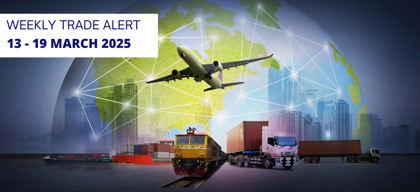Digital lending FinTechs are all set to solve MSME financing problem

Finance & Accounting
337 week ago — 6 min read
Micro, Small and Medium Enterprises (MSMEs) are vital for the economic growth and competitiveness of any country; hence supporting the SMEs’ financial needs is crucial. In USA, SMEs comprise 99% of all companies, employ 50%+ of country’s private sector workforce and contribute 50%+ of the non-farm GDP, and for the past twenty years have created approximately 65% of new jobs. Corresponding statistics for Australia are approximately 2 million which make up for around 70% of all industry employment. In UK, SMEs employ almost 60% of the private sector workforce. And most of the innovations across all geographies happen through the MSMEs.
India has over 36 million registered enterprises employing over 81 million people of which about 92.8% enterprises don't have access to credit. The total MSME Finance Gap across this sector is about INR 19 trillion and institutional demand-supply gap of INR 3.57 trillion (debt gap is INR 2.93 trillion). MSMEs have shown constant growth rate of around 11% every year till 2010-2011. The highest growth in recent time was recorded during the year 2011-2012 (18.45%) whereas during the year 2012-2013 and in the year 2013-2014 growth rate was around 14% and 12%, respectively. But it jumped to 17% in the year 2014-2015.
Unit economics (in branch and spoke model) does not favour traditional institution penetration in this segment. Lack of distributor/ trade credit facilities further widens the demand for their services. One of the other main reasons is absence of reliable credit methodology to assess these unfunded or underfunded enterprises.
However, things are becoming clearer now for the sector with rapidly increasing digital footprints in the country due to some sincere effort of the previous as well as current Indian governments towards digital India and pushing India towards single identity- Aadhaar. Government of India’s ambitious projects like Public Procurement Policy, Pradhan Mantri MUDRA Yojana, Make in India, Start-up India, and Skill India and the roll out of GST has given tremendous growth impetus to several industries. Aimed at increasing growth of manufacturing sector by 12-14% per annum and increasing its share of GDP to 25% by the year 2025, the government plans to make financial and technical support more accessible.
Unfortunately, despite such positive factors, in recent years MSME lending on the banks’ balance sheets haven’t seen much improvement.
Banks are already redrawing their strategies on funding MSMEs, expecting the transition to GST will improve their credit profiles and enhance their borrowing capacity. Now under GST; MSMEs are bound to disclose all their inflows and outflows, which means their balance sheet should become transparent, stronger and better. And therefore the ability to borrow should also improve. MSME loans have been de-growing for the past few months as the sector faced issues owing to demonetisation and later the transition to GST. However, the de-growth, which had peaked in the months following demonetisation, will soon start stabilising.
Digital opportunity for SME finance in India
India is on the cusp of significant growth in data traffic driven by rising data users as well as growing data usage per user. Country’s smartphone market will grow at 23% Compound Annual Growth Rate (CAGR) through 2018 and would account for 30% of the global growth during the period overtaking USA to become second largest smartphone market.
India’s internet penetration to reach 50% by 2018, up from 26% in 2016, driven by rising smartphone availability and affordability, online content and changing user behaviour.
What many digital lenders do/ can do-
• Their proprietary credit models have capability to assess SME/ MSME customers who otherwise don’t have any credit history or poor credit history with less fault of theirs.
• Their credit methodology is capable of assessing such customer’s willingness to pay or default intent.
• In many cases, they guide and help MSME customers in getting their working capital gap funded through their lending marketplace through single or multiple Banks/ NBFCs conveniently. With their understanding many also help borrowers to improve credit score by way of financial/ credit literacy education.
• They combine the best in class technology experience with credit underwriting and data analytics capabilities.
• Online eKYC (PAN & Aadhaar), Digital footprints analysis, Mobile based underwriting, e-disbursement process and eNACH for repayments make the whole process almost paperless.
There is already lot of momentum and innovation happening in these FinTech companies and new-age NBFCs. Scenario can change very fast if VC (Venture Capital)/ PE (Private Equity) companies can start investing aggressively at an early stage. It's a funding-gap opportunity of INR 19 trillion - it benefits everyone involved in the process. Is there some other country on this planet with such a huge opportunity?
To explore business opportunities, link with me by clicking on the 'Invite' button on my eBiz Card.
Disclaimer: The views and opinions expressed in this article are those of the author and do not necessarily reflect the views, official policy or position of GlobalLinker.
View Vaibhav 's profile
Most read this week










Comments
Share this content
Please login or Register to join the discussion